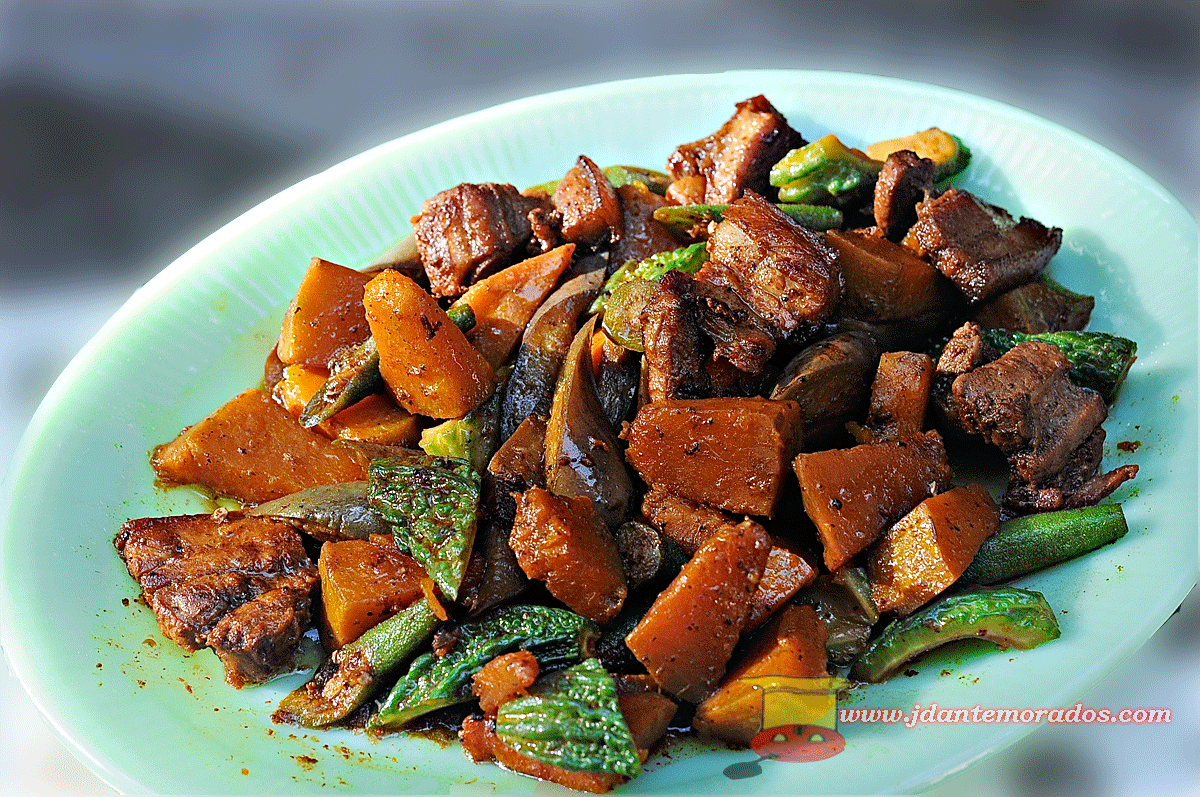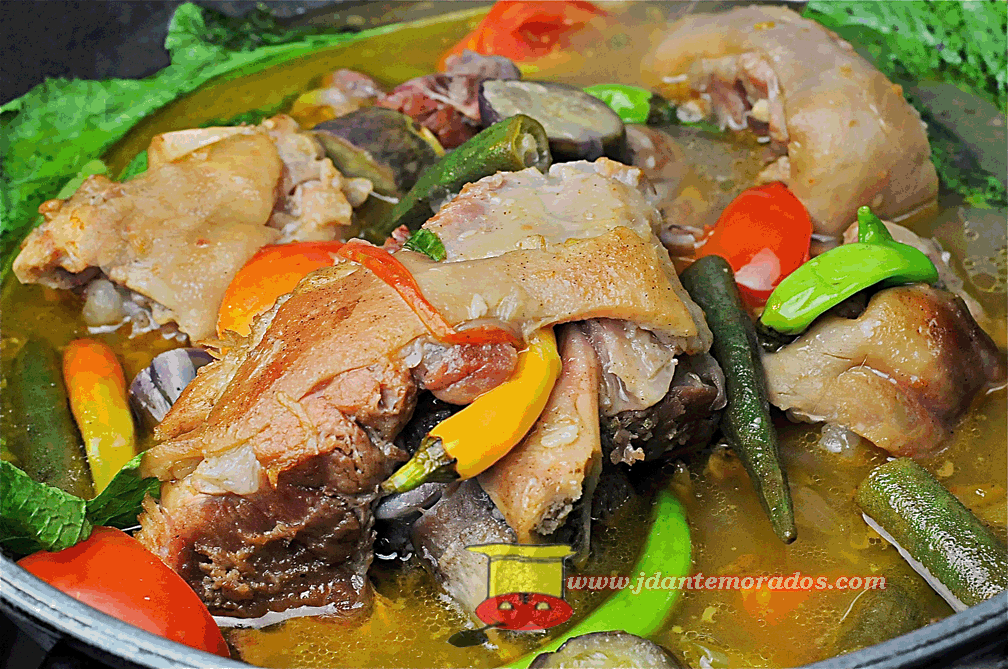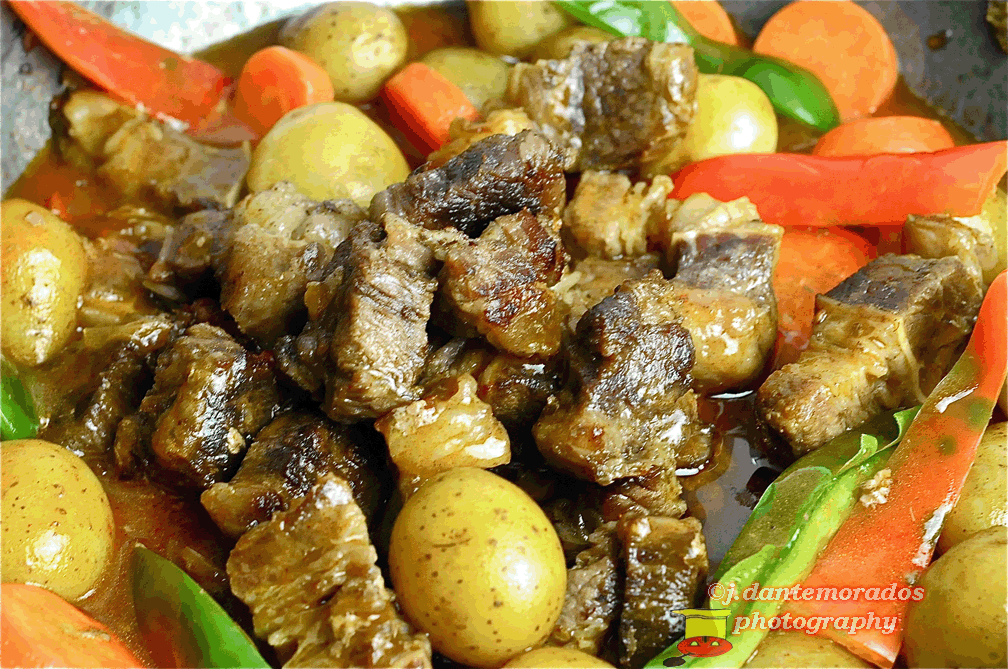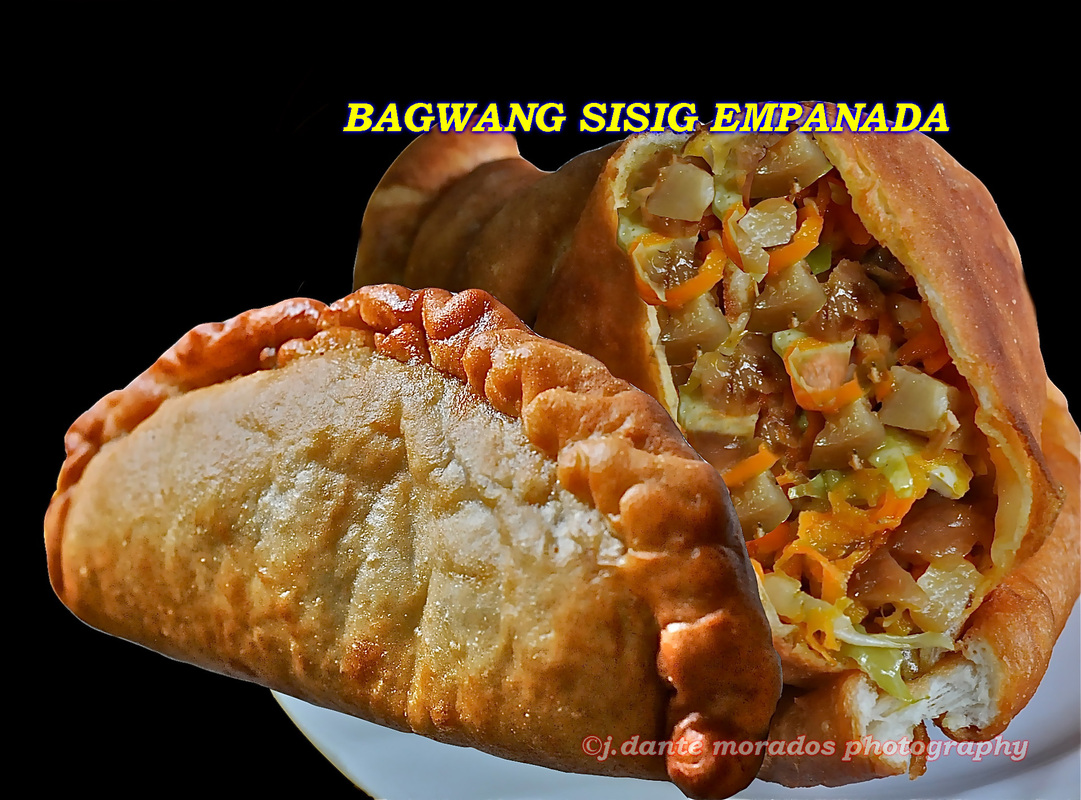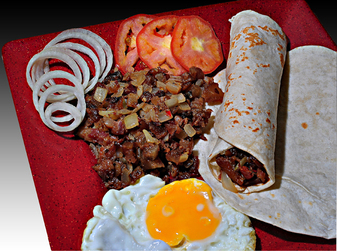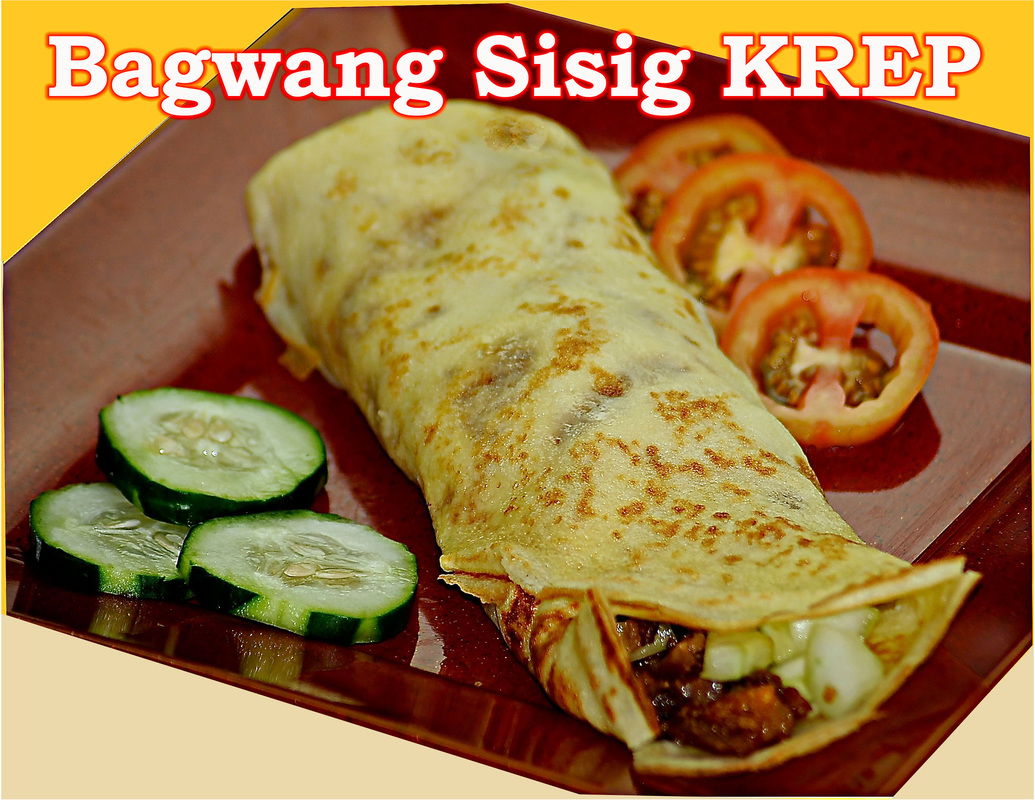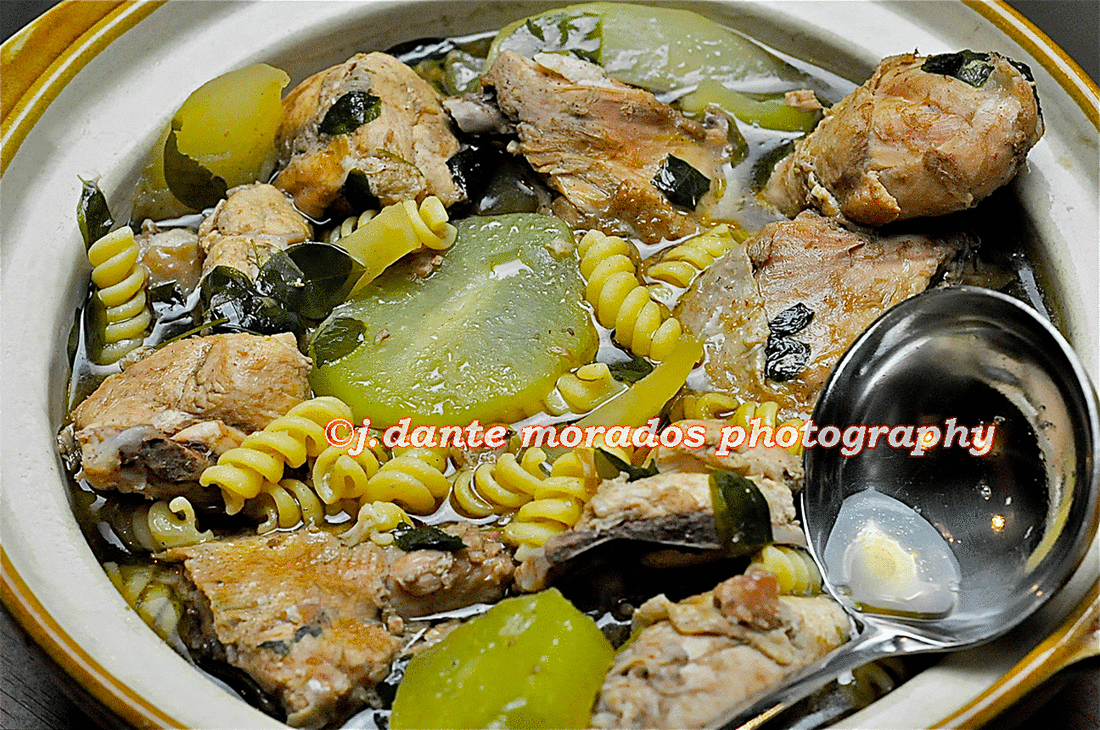ADO-BET (The Marriage of Adobo & Pinakbet)
(The MARRIAGE of ADOBO & PINAKBET)
Familiar with Pinakbet topped with Crispy BAGWANG?
Can’t give out recipe.
Both BAGWANG and its EXCLUSIVE marketing arm,
MANILA Q, are registered and patented.
And so, dishing out another technologically proven offering as well,
let’s talk about…
originally of Spanish term, Adobo,
in strictest sense, is a type of marinade or sauce
from where soaked raw meats absorb needed flavor.
Common to it are: salt, garlic, paprika, pepper oregano and vinegar.
The use of soy sauce started ONLY when “Pinoys” created their own version
calling it as such denoting already a “dish” in itself
and no longer just a flavor solution.
Adobo (soy and vinegar stewed meat) is considered by many
as the Filipino national dish scrambling it out to top slot along with
“Kare-Kare” (meat in peanut sauce) and
“Sinigang” (tamarind soup-based meat).
Issuing recipe herewith marrying it with “PINAKBET”,
a famous Ilocano (folks of the northern part of Philippines, Ilocos Region)
favorite of stewed various veggies either with or without
“bagoong” (shrimp or fish paste).
FRIED ADOBO:
½ kilo skin-on sliced “liempo” (pork belly)
500 ml. water
30 ml. palm or soya oil
6 cloves crushed garlic
2 grams salt
1 gram ground black pepper
10 ml. soy sauce
8 ml. cane vinegar
PINAKBET:
6 cloves crushed garlic
1 large sliced tomato
1 large sliced onion
½ modest sized cubed “calabasa” (yellow squash)
6 pieces “okra” sliced
2 large sliced “talong” (eggplant)
1 medium sliced “ampalaya” (bitter gourd or bitter melon)
30 grams “bagoong alamang” (shrimp paste)
15 ml. water
PROCEDURES:
I. Adobo:
1. In a suitable frying pan add in water and boil to desired tenderness
sliced liempo. When done scoop out, set aside and discard water.
2. In the same pan, heat oil. Add in garlic-toss a bit.
3. Pour in boiled “liempo” and fry together with garlic for 1 minute.
4. Add in salt, soy sauce and vinegar. Continue tumbling until almost all liquid are absorbed by the meat OR
sauce in pan becomes “oily”.
5. Scoop cooked meat. Set aside.
II. Pinakbet:
1. In the same pan with left-over Adobo oil, pour in crushed garlic toss a bit.
2. Add in tomato and onion tumble for 30 seconds.
3.Pour in calabasa, ampalaya, okra, bagoong alamang and water .
Let boil while tumbling constantly for 2 minutes.
Add in talong and simmer for another 30 seconds or until calabasa is done.
III. FINAL ADO-BET:
In suitable plate, pour in Pinakbet and top with Fried Adobo.
Witness the smile and satisfaction spelled by the faces of your loved ones
as they “bond together” over sumptuous 2 dishes combined into 1.


